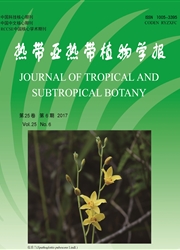

 中文摘要:
中文摘要:
用石蜡切片法在显微镜下观察白蜡虫[Ericeruspela(Chavannes)]7种寄主植物叶的解剖结构。结果表明,寄主植物的叶脉、表皮、栅栏组织、海绵组织、维管束解剖结构及数量性状特征在属、种间存在显著差异。7种寄主植物中,华南小蜡化igustrumcalleryanumDecne.)和白蜡树(FraxinuschinensisRoxb.)表皮被毛,华南小蜡表皮毛浓密,白蜡树表皮毛稀疏,其它寄主植物表皮无毛;女贞树(LigustrumlucidumAdt.)栅栏组织、海绵组织和叶脉的厚度最厚、维管束直径最大,其它寄主植物相对较小。因此,叶片表面光滑、叶脉发达、叶片肥厚是白蜡虫优良寄主植物的重要解剖学特征。7种寄主植物中脉和侧脉发达,近轴面凹陷,远轴面突起,肉脉包埋在叶肉中,推测叶脉突起和凹槽可能是白蜡虫固定位点选择的关键线索。
 英文摘要:
英文摘要:
Leaf anatomical structures of seven host plants of Ericerus pela (Chavannes) were olgservea unaer me microscope (NikonE800) with paraffin sectioning method, including leaf thickness, midrib, culticle, palisade tissue and spongy tissue, diameter of vascular bundle, ratio of palisade tissue to spongy tissue, and ratio of leaf thickness to midrib thickness. The results showed that there were significaut differences among genus and species of quantitative character and anatomical structures, which had taxonomic significance for classification of Ligustrum, Frcocinus and Chionanthus. Among seven host plants, the leaf surface of Frcocinus chinensis Roxb. and Ligustrum calleryanum Decne. had trichomes, while the others absent. Ligustrum lucidum Ait. had the maximum diameter of vascular bundle and the thickest of vein, spongy tissue and palisade tissue. Therefore, it may be important anatomical features of superior host plants of Ericerus pela that leaf surface is smooth with welldeveloped veins and thick lamina. Among host plants, well-developed main and lateral veins formed protrude on the abaxial surfaces and groove on the adaxial surfaces. However, a network of minor veins was present in the lamina of the leaf and these were too small to be visibly raised on either the lower or upper surfaces of leaf. So, it suggested that groove and protrude of veins provided key cues for settling sites selection of E. pela.
 同期刊论文项目
同期刊论文项目
 同项目期刊论文
同项目期刊论文
 期刊信息
期刊信息
